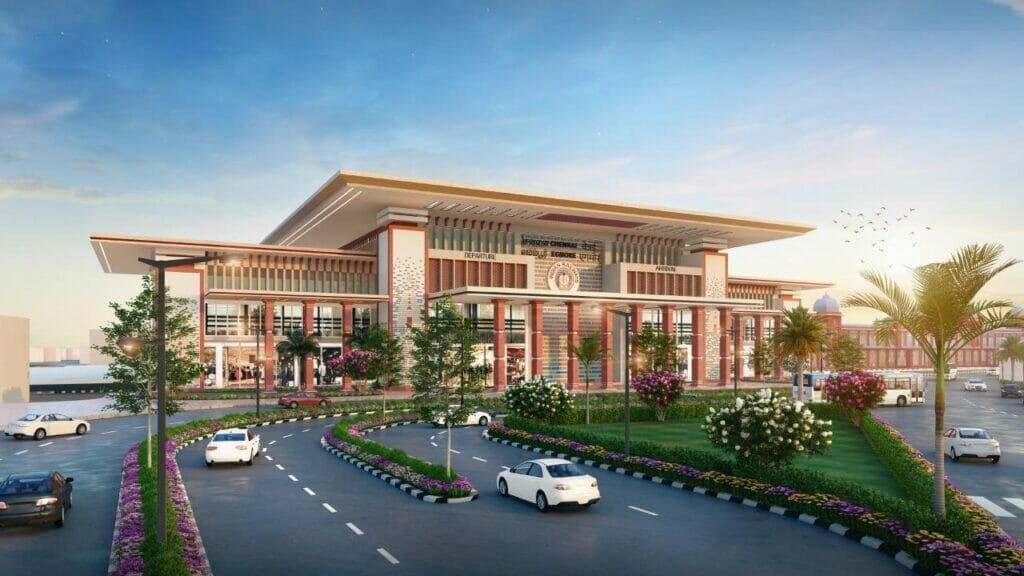The Southern Railway, which has been chalking up plans to modernise the Egmore railway station, has finally released details. In what promises to be a complete sweep of the premises, the station will get a much-needed infrastructural upgrade. What is heartening is that the heritage aspect of the station is to be retained, with much of it being repurposed.
But will the proposed modernisation dwarf the age-old edifice?
That is an aspect that the railways will do well to ponder over even as it goes ahead with the makeover.
Egmore station’s growing infra needs
There is no doubting the fact that the Egmore station, the second such facility in the city after Central, is urgently in need of changes.
What was once a largely empty station with trains on metre gauge and essentially from Chennai to the south, has morphed into a busy terminus for broad gauge trains from all over India. That by itself has caught the infrastructure unawares.
Added to this, the increased congestion in the neighbourhood has also added to the station’s woes.
Getting off public transport and walking to the building is a nightmare owing to the chaotic traffic. Driving in is another matter altogether, and as for parking, that is a near impossibility.
The railways did attempt some expansion to the rear of the station, essentially to cater to suburban railway traffic but that has not helped much. Unlike Central, where People’s Park to the rear and west proved a convenient outlet for expansion along with the sacrifice of Moore Market, Egmore is hemmed in.
Read more: Citizens’ wishlist: How to make Perambur railway station user-friendly
Egmore station redevelopment project
Envisaged as a project costing Rs 842 crores and to be completed in 36 months, the contract has been given to DEC Infrastructure and Projects Pvt Limited, a Hyderabad-based entity with Tata Consulting Engineers providing the Project Management Services.
A press note from the railways has it that ‘the major scope of the redevelopment work includes the construction of new station buildings (G+3 structures) on both sides of the station (Gandhi-Irwin side & Poonamallee High Road side), arrival/departure concourses, arrival/parcel FOB, and multi-level car parking.’
The total built-up area will be about 1,35,406 sq.m.
‘The redevelopment is intended to provide an iconic structure with modern state-of-the-art facilities while retaining the heritage value of the existing structure’ adds the note.
Read more: Chennai pins hopes of decongestion on upcoming Kilambakkam bus terminus
Egmore station’s original structure could be sidelined
The sketch of the proposed terminal and the drawing that shows its positioning with respect to the original edifice seems to indicate that the present structure will play second fiddle at most in the new scheme of things. It forms neither a part of the dedicated pickup nor drop-off locations, being pushed to one side of the new plan.
This is not how cities abroad have integrated their heritage station buildings with modernisation. The old almost always forms part of the arrival area, as it presents an impressive front. In the case of Egmore too this needs to be done, if the old edifice is to remain relevant.
It is pertinent to point out here that in Central, the arrival area fronts the main station building. It does not have to be different in the case of Egmore.
The rest of the plan as rolled out promises to be just what the station needs – escalators at all platforms, increased seating space, better and more toilets, and above all, connectivity to other modes of public transport, including the Egmore Metro Station.
We wish the railways all the best in this new endeavour and would like to add just one more request – can the extension please have aesthetics as an important aspect? The present additions to the station, including the escalators and the kiosks, are all monstrously ugly and shabbily maintained.
Egmore station was once a prospect that pleased the eye. May we please see a return of those days?
[This story was first published on Madras Musings and has been republished with permission. The original article can be found here.]
